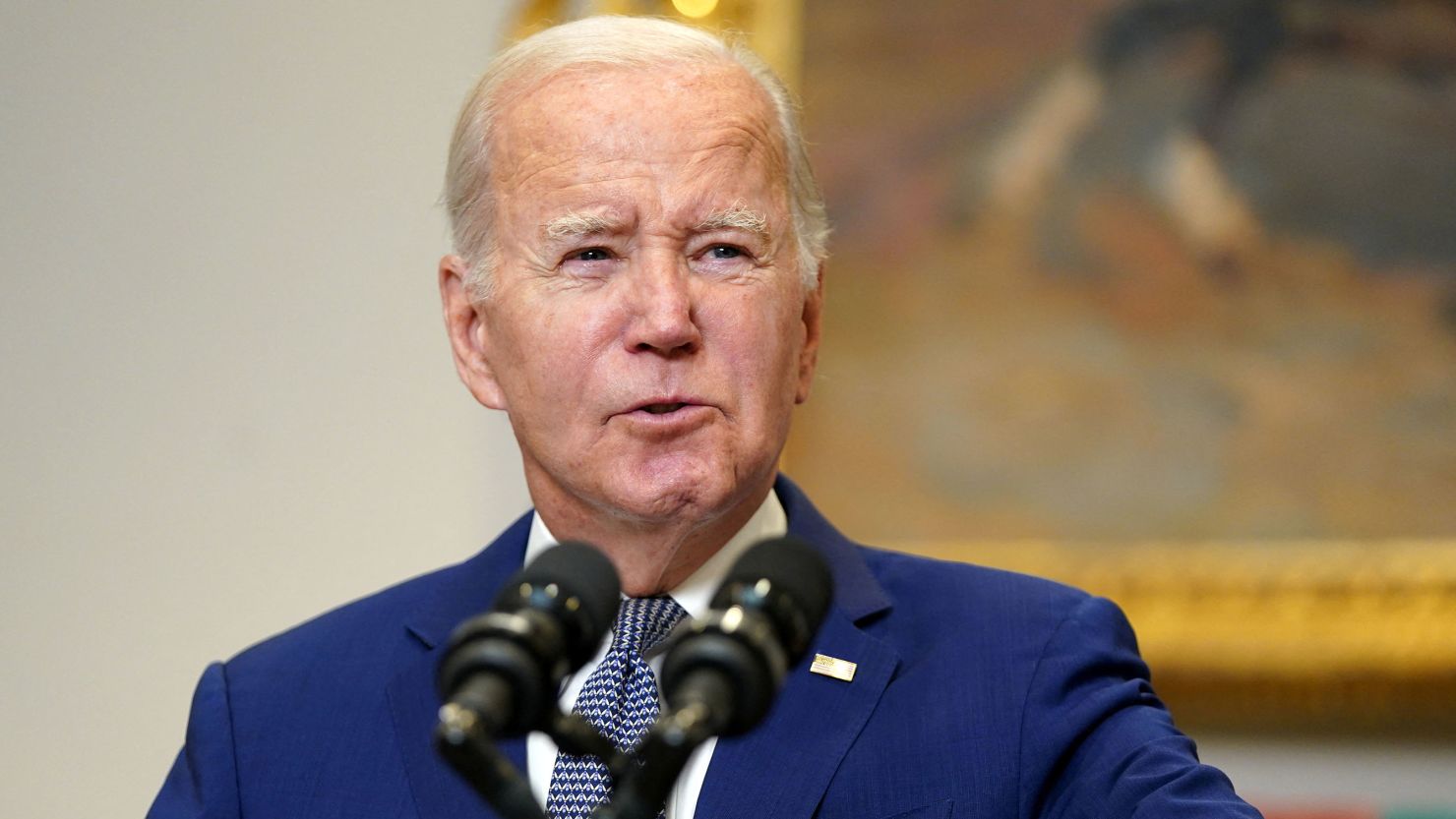President Joe Biden on Friday announced the locations of seven regional hubs to manufacture hydrogen – a fuel cleaner than fossil fuels like oil, gas and coal – but one which can be derived from renewable energy, nuclear power or planet-warming methane gas.
Biden made the announcement alongside Energy Secretary Jennifer Granholm at the Tioga Marine Terminal in the Port of Philadelphia – which will eventually use hydrogen produced from renewable energy and nuclear power at a new Mid-Atlantic hydrogen hub comprising parts of Pennsylvania, New Jersey and Delaware.
Speaking in front of port workers on Friday, Biden touted the hydrogen hubs as a major part of his “Bidenomics” plan to create new jobs and new industries. “It’s all part of my plan to make things in America,” Biden said.
He also said the hydrogen initiative would make progress on his ambitious climate goals.
“I made it a goal for our country to get to net-zero emissions from pollutants no later than 2050,” Biden said, adding that hydrogen is an important supplement for renewables like wind and solar, especially to power heavy industry, heavy duty trucks and shipping.
“That’s where hydrogen comes in,” Biden said. Using “hydrogen, you can power industries like the production of steel and aluminum. It’s going to end up changing our transportation system. That lets us get to this place without putting more carbon in the atmosphere.”
Seven regional hubs will be awarded funding from a pot of $7 billion that was passed last year as part of the bipartisan infrastructure law. In addition to the Mid-Atlantic, the new hubs will include:
- An Appalachian hub, located across West Virginia, Southeastern Ohio, and Southwestern Pennsylvania – this hub will be the one largest in terms of production and derive hydrogen from the region’s methane gas;
- A California hub that will span the state and encompassing the ports of Long Beach, Los Angeles and Oakland;
- A Houston, Texas-based hub that could eventually expand to include parts of Louisiana, which will derive hydrogen from methane gas and renewable energy;
- An Upper Midwest hub spanning Minnesota, North Dakota and South Dakota, which will derive hydrogen from wind energy and will be used for agriculture and power;
- A second Midwest hub will span parts of Illinois, Indiana and southwest Michigan and will be derived mostly from nuclear power;
- And a Pacific Northwest hub will span parts of Eastern Washington and Oregon as well as parts of Montana and will focus on hydrogen for freight and agriculture.
Biden administration officials said they are still determining exact locations for the hubs in each region.
The Biden administration hopes these hubs will spark a new US industry that senior administration officials estimated could catalyze around $50 billion in public and private investments and create tens of thousands of jobs.
“I think of hydrogen as the ultimate energy carrier,” a senior administration official told reporters on a Thursday press call. “It’s earned the nickname as the Swiss Army knife of clean energy.”
Senior administration officials estimated that together, the seven hubs will eventually produce 3 million tons of hydrogen per year – a third of the total national goal DOE has set for 10 million tons of hydrogen produced by 2030.
In addition to economic impacts, the Biden administration is betting big on hydrogen for its climate goals. Senior administration officials said the fuel will be used to clean up sectors of the economy like heavy duty trucking and industry, both of which are hard to wean off fossil fuels.
Biden’s Environmental Protection Agency has also made hydrogen as an integral part of its proposed regulation to cut emissions from power plants – another huge fossil fuel emitter in the US economy.
A senior administration official estimated the hubs would reduce the country’s planet-warming carbon dioxide pollution by roughly 25 million metric tons per year from end use, adding that is roughly equivalent to taking 5.5 million gasoline-powered cars off the road.
The hubs that use methane gas to generate hydrogen will be outfitted with carbon capture technology to reduce their carbon dioxide pollution, a senior administration official said. The official did not provide estimates for possible emissions of methane – a more potent greenhouse gas than carbon dioxide in the first two decades it’s in the atmosphere.
Politicians across the aisle representing the new hubs praised the announcement.
“We’re big beneficiaries of it,” California Gov. Gavin Newsom said at a press event. “Hundreds of thousands of jobs; we estimate over 200,000.”
West Virginia Sens. Joe Manchin, a Democrat, and Shelley Moore Capito, a Republican, also hailed the hubs, calling them a major economic boon for their state.
“Today is a major win for the ARCH2 team and for future economic development and energy production in West Virginia,” Capito said in a statement.
Manchin, who was a strong advocate for the hydrogen hubs in congressional negotiations, said West Virginia “will be the new epicenter of hydrogen in the United States of America.”
Still, some environmental groups criticized the announcement, saying it will lead to continued use of fossil fuels and extend the life of that industry.
So-called blue hydrogen, which is derived from methane gas, “is an invention of the oil and gas industry,” said Robert Howarth, a professor of ecology and faculty fellow at Cornell University. “It is extremely disappointing to see the Biden administration provide funds for hydrogen hubs which will be based on fossil fuels, even with the carbon capture.”








